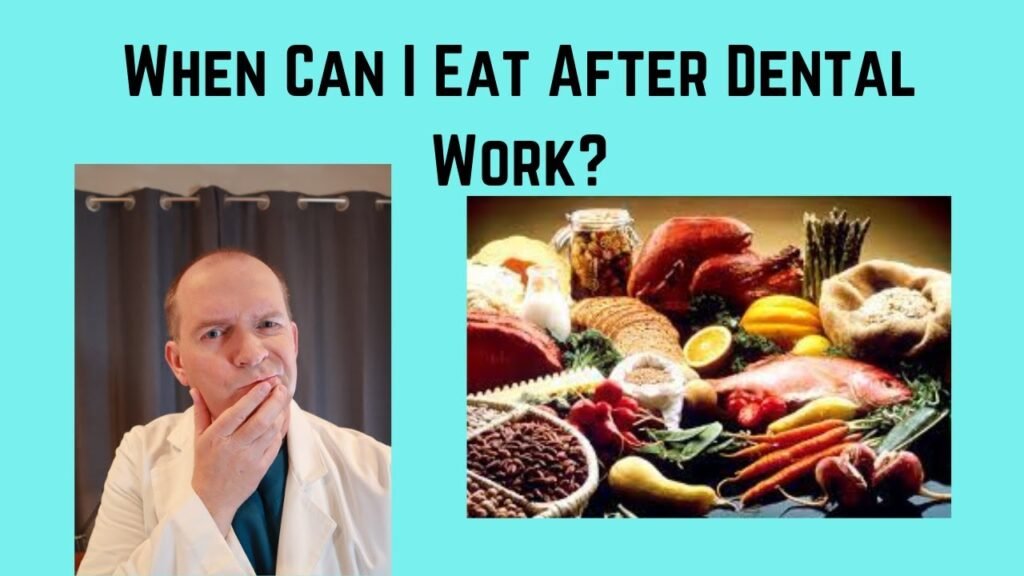Eating After Tooth Extraction: When is it Safe?

After undergoing a tooth extraction, it's important to know when you can safely resume eating. Proper post-operative care is crucial for a smooth recovery process. So, how soon after a tooth extraction can you eat? In this article, we will discuss the recommended timeline for resuming a normal diet, as well as tips for ensuring a speedy and successful recovery.
- Soft foods like yogurt, mashed potatoes, and smoothies can be eaten immediately after a tooth extraction to avoid putting pressure on the extraction site.
- It is recommended to wait at least 24 hours before consuming hot liquids or solid foods to allow the blood clot to form and the healing process to begin.
What is the recommended waiting time before eating after a tooth extraction?
After a tooth extraction, it is recommended to wait 24 hours before eating soft foods that require minimal chewing. Avoid eating from the side of the procedure to prevent any discomfort.
How long should one wait to drink water after getting a tooth pulled?
After getting a tooth pulled, it's important to wait at least an hour before drinking water. This allows time for a blood clot to form, which is crucial for the healing process. Once the blood clot is in place, staying hydrated is key to promoting recovery.
Once the hour has passed, you can start drinking water to stay hydrated. However, be mindful not to swish the water around in your mouth too vigorously. It's also best to avoid using a straw, as the sucking motion can disrupt the blood clot that has formed and delay the healing process. Keeping hydrated with gentle sips of water will aid in a smooth and speedy recovery.
In the hours following a tooth extraction, it's recommended to drink plenty of water to aid in the healing process. Hydration is essential for overall health and can help prevent complications. Remember to take it easy, avoid swishing water around, and skip the straw to ensure a successful recovery after getting a tooth pulled.
What is the proper way to swallow in order to prevent dry socket?
To prevent dry socket, it is important to avoid using a straw and instead take gentle sips from a cup or mug. Additionally, opting for soft, lukewarm, and smooth foods like mashed potatoes, yogurt, or smoothies can help prevent irritation to the healing socket. Avoiding spicy, crunchy, or acidic foods is crucial in promoting proper healing and reducing the risk of developing dry socket.
Navigating the Post-Op Period: A Guide to Eating After Tooth Extraction
Navigating the post-op period after a tooth extraction can be daunting, but with the right guidance, it can be a smooth process. When it comes to eating after a tooth extraction, it's important to stick to soft foods that are easy to chew and won't irritate the healing wound. Opt for foods like mashed potatoes, yogurt, smoothies, and scrambled eggs to ensure you're getting the nutrition you need without causing discomfort. Remember to avoid crunchy or hard foods, as well as hot or spicy foods that can increase inflammation and slow down the healing process.
As you navigate the post-op period after a tooth extraction, be sure to prioritize your oral health by following the recommended dietary guidelines. Incorporating nutrient-rich foods like soups, pureed vegetables, and protein smoothies can help promote healing and reduce the risk of infection. Remember to stay hydrated and avoid using straws or smoking, as these actions can disrupt the healing process. By being mindful of your eating habits and choosing foods that are gentle on your mouth, you can ensure a speedy recovery and get back to your normal routine in no time.
Safely Enjoying Food: Tips for Eating After Tooth Extraction
After a tooth extraction, it is important to follow proper guidelines to ensure a smooth and speedy recovery process. One key tip for safely enjoying food after a tooth extraction is to stick to soft and easily chewable foods. This will help prevent any irritation or damage to the extraction site while still allowing you to enjoy a variety of nutritious options.
Another helpful tip is to avoid foods that are too hot or too cold, as extreme temperatures can cause discomfort and slow down the healing process. Opt for lukewarm or room temperature foods instead to minimize any potential pain or sensitivity. Additionally, it is crucial to avoid hard, crunchy, or sticky foods that can get stuck in the extraction site and disrupt the healing process.
Lastly, maintaining good oral hygiene is essential for a successful recovery after a tooth extraction. Be sure to gently brush your teeth and rinse your mouth with a saltwater solution as recommended by your dentist. By following these tips and being mindful of what you eat, you can safely enjoy food after a tooth extraction while promoting healing and overall oral health.
In summary, it is important to follow your dentist's post-extraction care instructions to ensure a smooth and speedy recovery. While it may be tempting to indulge in your favorite foods, it is best to stick to soft, easy-to-chew options for the first few days. By doing so, you can help minimize discomfort, reduce the risk of complications, and promote healing, allowing you to return to your regular diet as soon as possible. Remember to always consult with your dentist if you have any concerns or questions about eating after a tooth extraction.